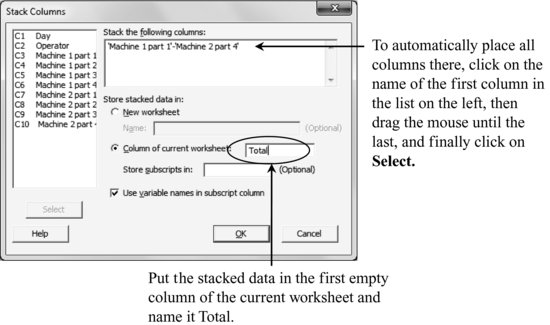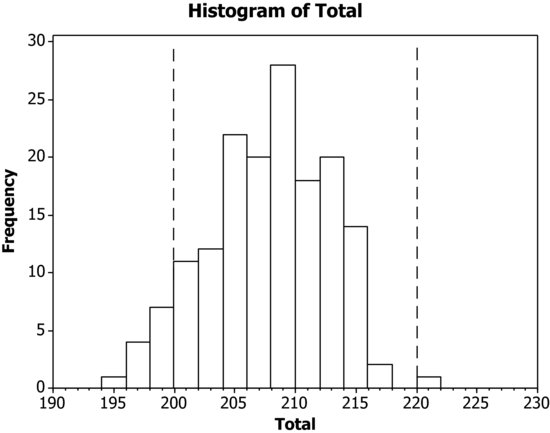6.3 Bread
First of all, make a histogram of all data. For this, we have to pile all data in a single column.
Data > Stack > Columns

Graph > Histogram: Simple
Graph variables: Total. The aspect of the graph has been changed adding two lines that show the tolerance limits. This has been done using the toolbar: Tools > Toolbars > Graph Annotation Tools

The distribution is left-skewed, with a certain percentage out of tolerances. Let us have a closer look stratifying by machine.
Put the values of Machine 1 in one column (Data > Stack > Columns for ...
Get Industrial Statistics with Minitab now with the O’Reilly learning platform.
O’Reilly members experience books, live events, courses curated by job role, and more from O’Reilly and nearly 200 top publishers.

